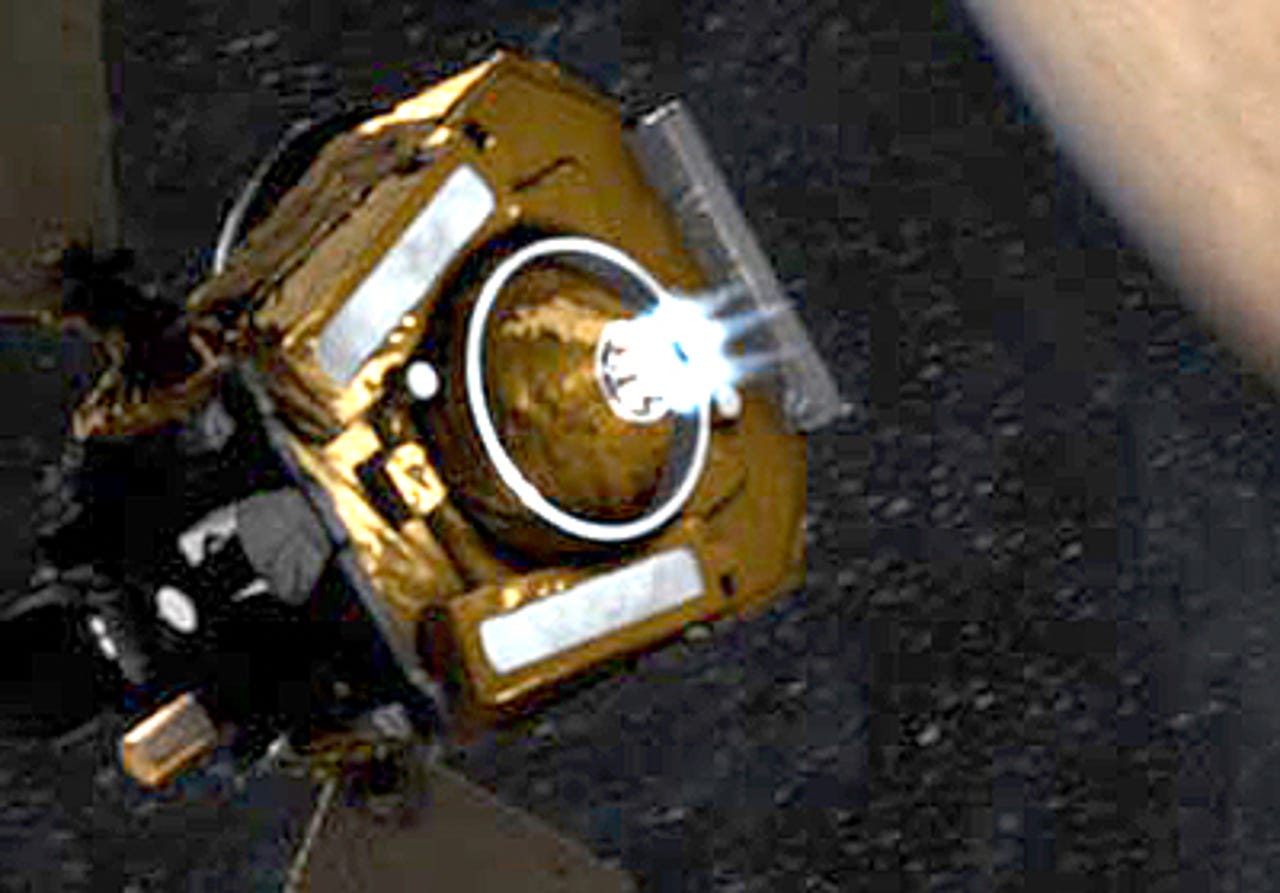Images: Mars or bust


Spacecraft fires engines
After a seven-month journey, NASA's Mars Reconnaissance Orbiter went through maneuvers to place itself into orbit around Mars on Friday. The spacecraft is the most technologically advanced ever sent to Mars.
Mars Reconnaissance Orbiter
NASA's $450 million Mars Reconnaissance Orbiter neared its dangerous first rendezvous with the Red Planet on Friday.
Position of the planets
This image shows the relative position of the planets in the inner solar system and the Mars Reconnaissance Orbiter's location within that context.
Mars Reconnaissance Orbiter operations team
The Mars Reconnaissance Orbiter operations team prepares for the spacecraft's final approach to Mars, which is expected to take place Friday.
Mars Reconnaissance Orbiter
In this artist's conception of the Mars Reconnaissance Orbiter, note the thin, long pole in the center. That's the SHARAD antenna, which will be able to view liquid or water in up to 1 kilometer of the Mars crust. Also center, covered by blankets, is the High Resolution Imaging Science Experiment camera, which will provide the highest-resolution photos to date.
testing
NASA tested the High Resolution Imaging Science Experiment camera while en route to Mars. The camera took this picture of Earth's moon from 6 million miles away. To the naked eye, the moon would appear as a star-like point of light at such a distance. The test verified the camera's focusing capability and provided an opportunity for calibration.
preparing the orbiter
During testing of the craft, workers stabilize the crane holding one of the enormous billboard-size solar panels.
double the size
This drawing illustrates that the newest Mars orbiter will be double the size of the satellites currently in operation around the Red Planet.
Newton Basin
The Mars Reconnaissance Orbiter will study the surface of Mars for water, including this meteor impact crater in the Newton Basin where frost can be seen on the walls and sand dunes on the floor.
Chasma Boreale
The Chasma Boreale is a trough in the north polar cap area of Mars. The spring photo shows dark sand emerging from bright frost from the winter.
Viking lander
Mars exploration has come a long way in a short time. This is the first photograph sent back from the surface of Mars by the Viking 1 lander on July 20, 1976.